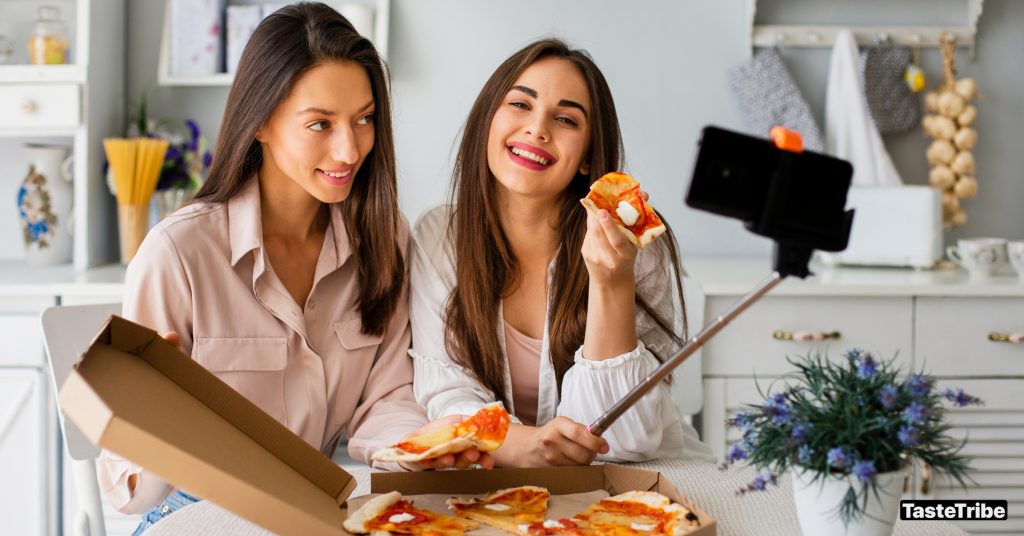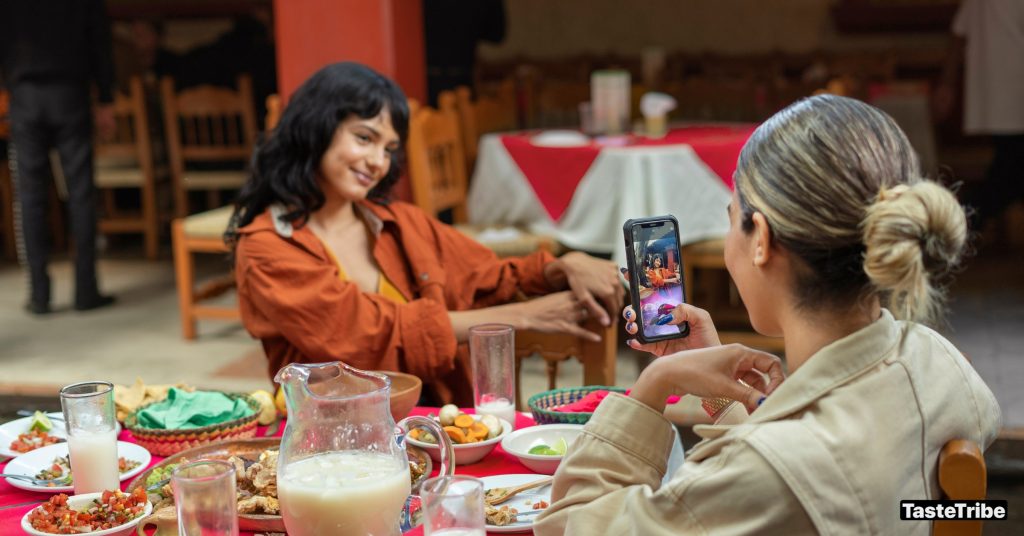
In today’s fast-paced and highly competitive restaurant industry, attracting new diners can be a tough task, particularly for small establishments operating on tight marketing budgets. Fortunately, the rise of social media platforms and influencer marketing has provided a much-needed boost to small restaurants, allowing them to reach wider audiences without spending a fortune. Social media and micro-influencers have transformed how small restaurants connect with potential diners, increase visibility, and build a loyal customer base. This blog will explore how small restaurants can leverage social media and influencer marketing to attract more diners, even with limited resources.
1. Social Media Is a Game-Changer for Small Restaurants
Social media platforms like Instagram, Facebook, and TikTok have revolutionized marketing for small restaurants by offering cost-effective solutions for promoting their business and engaging with potential customers. The most significant advantage of social media is its ability to provide small restaurants with a wide reach and direct engagement with audiences, without the financial burden of traditional marketing methods like print ads or billboards. It enables restaurants to build brand recognition, showcase their menu, and interact with customers in real-time.
One of the most significant benefits of social media for small restaurants is its cost-effectiveness. Platforms like Instagram and Facebook allow restaurants to post content for free and potentially reach thousands of local customers with little to no financial investment. The ability to grow an organic following through high-quality posts, engaging content, and interactive features means that even the smallest restaurants can create a meaningful online presence. For restaurants with small budgets, boosting posts or running paid ads on social media is far less expensive than traditional advertising and can target specific demographics, ensuring that your efforts reach the right audience.
Social media also offers the unique benefit of direct engagement. Restaurants can connect with customers by responding to comments, answering questions, and engaging with feedback. This personal interaction can significantly strengthen customer relationships, leading to increased loyalty and repeat business. When customers feel heard and appreciated, they are more likely to become advocates for your brand and share their positive experiences online.
For Example
A small brunch spot could post daily Instagram Stories featuring behind-the-scenes content, such as preparing their signature pancakes or showing a bustling kitchen at work. By engaging followers through interactive polls or questions like “Which topping should we feature next?” the restaurant keeps its audience actively involved, leading to higher visibility and increased interest in their menu.
2. How to Create Effective Social Media Content
For small restaurants, creating compelling content is crucial to standing out in a crowded market. The good news is that you don’t need to spend a lot of money to create engaging content. By focusing on what makes your restaurant unique—whether it’s the food, the staff, or the atmosphere—you can build an authentic online presence that resonates with your audience. Social media thrives on consistency and authenticity, so it’s important to develop a content strategy that highlights the best aspects of your restaurant.
One of the most important things to remember when creating content is to post high-quality images and videos. Visual content is key to capturing attention and showcasing your restaurant’s offerings. While you don’t need professional equipment, good lighting and clear shots can make a world of difference. Invest time in taking well-lit, appetizing photos of your dishes, or use natural light to enhance the visual appeal of your restaurant. For videos, focus on short clips that highlight the preparation process or show the restaurant’s ambiance.
User-generated content (UGC) is another valuable tool for small restaurants. Encourage your customers to take photos of their meals and tag your restaurant in their posts. This not only provides you with fresh content to share but also acts as social proof, showing that people enjoy dining at your restaurant.
Storytelling is a powerful way to engage your audience and differentiate your restaurant from competitors. Whether it’s sharing the history of your restaurant, featuring the people behind the scenes, or highlighting the sourcing of your ingredients, telling a compelling story builds emotional connections with customers. When diners feel personally connected to your story, they’re more likely to support your business.
For Example
A small family-owned pizzeria could share posts about how the restaurant has been passed down through generations, how they hand-make their dough daily, or feature stories about their loyal customers who have been dining there for decades. By focusing on these personal, relatable aspects, the pizzeria builds a narrative that resonates with its audience and fosters customer loyalty.
3. The Power of Micro-Influencers for Small Restaurants

Micro-influencers, or influencers with 1,000 to 50,000 followers, have emerged as a game-changing marketing tool for small restaurants. Unlike large influencers who may charge exorbitant fees, micro-influencers are more affordable and often have a highly engaged following within a specific niche. For small restaurants, partnering with micro-influencers allows for authentic promotion while keeping marketing costs low. What makes micro-influencers especially valuable for small restaurants is their ability to provide localized reach and highly targeted engagement.
One of the main advantages of working with micro-influencers is their local reach. Many micro-influencers focus on a particular city or neighborhood, making them ideal partners for small restaurants that rely on local foot traffic. When micro-influencers share their experiences at your restaurant, they are likely reaching an audience of locals who could realistically visit your establishment. This makes their endorsement more effective in driving actual business compared to a large influencer with a global audience.
Micro-influencers typically have a more engaged audience, which is critical for converting social media exposure into real customers. Their followers tend to trust their opinions and recommendations, which means they’re more likely to take action—such as visiting your restaurant—based on the influencer’s posts. Because of this close relationship, micro-influencers can create more personalized and impactful content, driving meaningful engagement for your restaurant.
For small restaurants with limited marketing budgets, micro-influencers offer an affordable way to promote their brand. These influencers often charge much lower fees than larger influencers, or they may even be open to collaborations in exchange for free meals or exclusive dining experiences. This makes them an attractive option for small restaurants looking to maximize their marketing efforts without overspending.
For Example
A vegan café could partner with a local micro-influencer who specializes in plant-based cuisine. The influencer could visit the café, document their experience, and share a series of Instagram Stories showing the food, atmosphere, and staff. By tagging the restaurant and highlighting specific dishes, the influencer encourages their local followers to visit the café themselves. This type of collaboration is much more personal and effective than a generic ad campaign, and it’s more likely to result in actual diners coming through the door.
4. Influencer Marketing Strategies for Small Restaurants
When it comes to marketing strategies for small restaurants, influencer marketing can be a powerful tool to attract new diners. The key for small restaurants is to focus on authenticity and finding influencer partnerships that make sense for your brand and budget. Influencers can amplify your reach and help generate interest among local audiences, but it’s important to tailor your influencer marketing approach to fit the needs of a smaller establishment.
One of the most effective ways to utilize influencer marketing as a small restaurant is by starting small. Rather than reaching out to major influencers with millions of followers, focus on local food bloggers, micro-influencers, or even loyal customers with a strong social media presence. These influencers often have a more engaged audience, and their followers are more likely to be within your local area—potentially converting into paying customers. Offer these influencers a complimentary meal or experience in exchange for a post or shoutout. This kind of authentic promotion feels natural and genuine, which is more appealing to their audience.
Running social media contests is another way to leverage influencer marketing for small restaurants. You can partner with an influencer to run a giveaway or contest that encourages users to follow your restaurant’s social media pages, engage with your content, and tag friends for a chance to win a free meal or experience. Contests create excitement, increase engagement, and help spread your restaurant’s name to a wider audience. It’s a simple but effective way to build visibility and bring in new diners.
For Example
A neighborhood sushi restaurant could invite several local food influencers to attend a sushi-making class at the restaurant. The influencers would promote the event to their followers, document their experience through Instagram Stories, and encourage their followers to visit the restaurant to try the sushi themselves. This kind of event not only generates content for the influencers but also positions the restaurant as a community hub and a must-visit destination.
Read More: Influencer Marketing for Restaurants: Top Strategies for 2024
5. Tracking Success and Adjusting Your Strategy

As with any marketing initiative, it’s important for small restaurants to track the success of their social media and influencer marketing efforts. Social media platforms provide detailed analytics tools that allow restaurants to monitor the performance of their posts, ads, and influencer campaigns. By reviewing these metrics regularly, small restaurants can identify what’s working, what isn’t, and how to adjust their strategy for maximum impact.
One of the most important metrics to track is engagement. High engagement rates—likes, comments, shares, and saves—are a good indicator that your content is resonating with your audience. Posts with higher engagement are also more likely to be shown to a wider audience due to the algorithms of platforms like Instagram and Facebook. If you find that your engagement is low, you may need to experiment with different types of content or improve the quality of your photos and videos.
Reach is another important metric for tracking how many people are viewing your posts. A growing reach indicates that your restaurant is becoming more visible to potential customers. By regularly monitoring your reach, you can determine whether your influencer partnerships or social media promotions are increasing awareness of your restaurant. If your reach isn’t growing, you might consider partnering with different influencers or adjusting your targeting on paid ads.
Conversions are ultimately what drive business growth. Tracking how many people make a reservation, visit your restaurant, or place an order as a direct result of your social media or influencer marketing efforts is essential. This could involve tracking the use of a special discount code, monitoring online bookings, or simply asking customers how they heard about your restaurant. By focusing on conversions, you’ll be able to measure the direct impact that your marketing efforts are having on your bottom line.
For Example
A small taco stand could offer a limited-time discount code to its Instagram followers. By tracking how many people use the code, the taco stand can measure the success of the promotion and assess whether it led to an increase in foot traffic. If the promotion proves successful, the restaurant can replicate similar campaigns in the future or even offer more targeted promotions for specific menu items or events.
Conclusion
Social media and influencer marketing offer small restaurants a unique opportunity to attract new diners and grow their business without needing a large marketing budget. By focusing on authentic content creation, forming partnerships with local micro-influencers, and running engaging social media campaigns, small restaurants can effectively build a loyal customer base. Tracking engagement, reach, and conversions allows restaurants to continually refine their strategy and focus on the efforts that generate the most business. With a thoughtful, data-driven approach, small restaurants can use social media to stand out in a crowded market and turn online interactions into real-world diners.
Ready To Get More Diners?